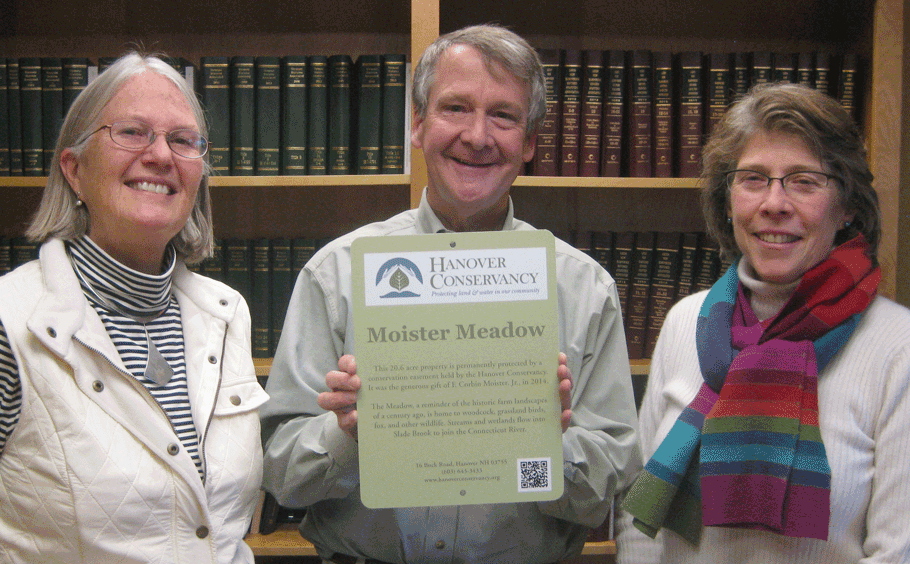




Land can be permanently protected by a land trust in two ways: outright ownership by the land trust (“ownership in fee”), or a conservation easement held by the land trust on privately owned property.
A conservation easement allows landowners to sell or pass their property on to heirs, with limited future development. More information on easements is below.
In either case, land conservation is uniquely designed for each property, and transaction costs can be funded by a combination of cash purchases by the land trust (generally funded by grants) and tax-deductible donations by the landowners.
Land conservation projects run the gamut from entirely donor funded (e.g. a donation of the full value of land plus a cash contribution to our Land Stewardship Fund), to entirely land trust funded (e.g. a full market value purchase from private landowners). A survey and appraisal of potential properties helps guide the valuation discussion.
A conservation easement is a voluntary, legal agreement between a landowner and a land trust or government agency that permanently protects its conservation values by limiting uses of the land. It allows you to continue to own and use your land, sell it, or pass it on to heirs.
When you donate a conservation easement to a land trust, you agree to give up some of the rights associated with the land. For example, you might give up the right to build additional structures, while retaining the right to harvest trees or grow crops. Future owners also will be bound by the easement’s terms. The land trust is responsible for making sure the easement’s terms are followed on a long-term basis.
A landowner sometimes sells a conservation easement, but usually easements are donated. If the donation benefits the public by permanently protecting important conservation resources and meets other federal tax code requirements, it can qualify as a tax-deductible charitable donation. The amount of the donation is the difference between the land’s value with the easement and its value without the easement.
Placing an easement on your property may also result in property tax savings.
A conservation easement can be essential for passing land on to the next generation. By removing the land’s development potential, the easement lowers its market value, which in turn lowers estate tax. Whether the easement is donated during life or by will, it can make a critical difference in the heirs’ ability to keep the land intact.
People execute a conservation easement because they love their land and want to protect it from inappropriate development while keeping their private ownership of the property. Moreover, the Conservancy, the oldest local land trust in New Hampshire, has the experience in working with landowners and knows Hanover’s natural resources well. We will ensure that the land remains permanently protected. Granting an easement to a conservation organization that qualifies under the Internal Revenue Code as a “public charity” – which the Hanover Conservancy does – can yield income tax savings.
Conservation easements are tailored to suit the land. For example, an easement on property with rare wildlife habitat might prohibit any development, while a farm’s easement might allow continued farming and construction of barns or a sugar house. An easement may apply to just a portion of the property, and need not require public access.
An easement restricts development to the degree that is necessary to protect the significant conservation values of that particular property. Sometimes this prohibits construction, and sometimes it doesn’t. The Hanover Conservancy works with landowners to write conservation easements that reflect both the landowner’s desires and the need to protect conservation values. Even the most restrictive easements typically permit landowners to continue such traditional uses of the land as farming and forestry.
Yes. In the five years between 2000 and 2005, the amount of land protected by local and state land trusts in the U.S. using easements doubled to 6.2 million acres. As of 2020, the National Conservation Easement Database has mapped about two-thirds of the estimated 40 million acres of easement land in the U.S. Landowners have found that conservation easements can be flexible tools, and yet provide a permanent guarantee that the land won’t ever be developed. Conservation easements are used to protect all types of land, including historical or cultural landscapes, streams and rivers, wetlands, wildlife areas, farmland, scenic views, trails, and working forests.
Meet with the Hanover Conservancy to explore the conservation values you want to protect on your land and what development rights you may want to retain. For example, you may already have one home on your property and want to preserve the right to build another home. That provision must be specifically written into an easement agreement. Always consult with other family members regarding an easement, and remember that you should consult with your own attorney or financial advisor regarding such a substantial decision. Conservation Easement steps fact sheet.
Most easements “run with the land,” binding the original owner and all subsequent owners to the easement terms. Only gifts of perpetual easements can qualify for income and estate tax benefits. The easement is recorded at the Grafton County Registry of Deeds so that all future owners and lenders will learn about the restrictions when they obtain title reports.
The Conservancy is responsible for ensuring the permanent protection of the land by enforcing the restrictions spelled out by the easement. Therefore, we monitor the property at least once a year to determine that it reflects the condition prescribed by the easement. We maintain written records of these monitoring visits and keep in touch with the landowner. Like other land trusts, the Conservancy establishes a stewardship fund to provide for long-term stewardship of the easements we hold.




